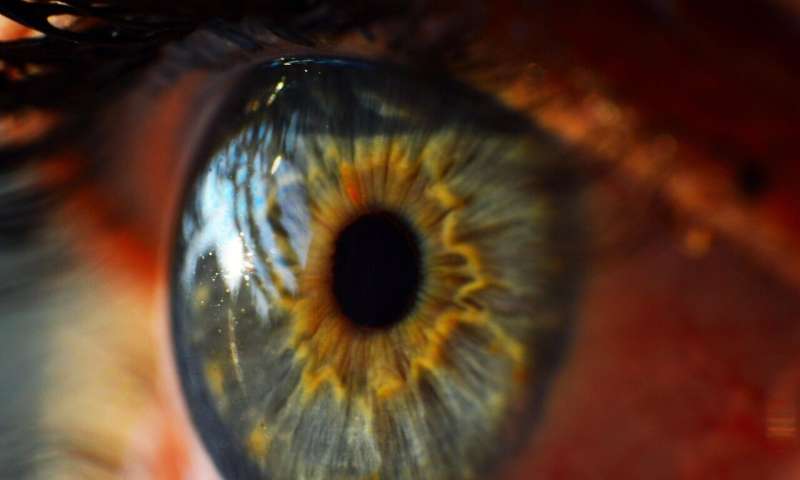
Surgeons can correct some vision problems by altering the eye so it better focuses light. While these procedures—which include laser procedures—are generally quite safe, some people experience pain long afterward. In a study in the Journal of Proteome Research, researchers linked changes in proteins in patients’ tears with pain months after surgery. The analysis suggests that shifts in the amounts of certain groups of proteins could one day identify at-risk persons.
When the eye fails to properly focus light on the sensory cells of the retina, poor vision results. In laser-assisted in situ keratomileusis (LASIK) and photorefractive keratectomy (PRK), surgeons use a laser to change the path of light as it travels toward the retina by altering the shape of the cornea, the eye’s transparent covering. Pain is common in the initial days after the procedure, but sometimes it can persist longer.
Researchers suspect such long-lasting pain may be related to changes in the environment immediately surrounding the corneal nerves, including in the tears that moisten the eye. Sue Aicher, Brooke Harkness, Anat Galor and colleagues decided to comprehensively survey tear proteins in search of potential predictors of post-operative eye pain.
The team began by recruiting people scheduled to have LASIK or PRK on both eyes at clinics in Portland, Oregon and Miami, Florida. The team focused their analysis on tears from 16 patients who reported a pain level of at least 3 out of 10 three months after surgery, and 32 patients who reported no post-operative pain after three months.
The researchers identified a collection of 2,748 proteins in tears from all the participants before surgery, the day after and three months after surgery. When the team compared protein profiles for the two groups of patients, they homed in on 83 proteins whose levels shifted up or down among the patients with post-operative pain. Using statistical tools, Aicher’s team then tested whether individual proteins or sets of proteins could predict whether eye-surgery patients would experience long-term pain.
The computer models using sets of three or four proteins appeared to be the most effective at predicting long-term discomfort. Such patterns of differences in proteins, say the researchers, could someday be used to evaluate patients’ risk of post-surgical eye pain and find new routes to treat it.
More information:
Brooke M. Harkness et al, Tear Proteins Altered in Patients with Persistent Eye Pain after Refractive Surgery: Biomarker Candidate Discovery, Journal of Proteome Research (2024). DOI: 10.1021/acs.jproteome.4c00339
Citation:
Predicting long-lasting pain from LASIK with tear proteins (2024, July 9)
retrieved 28 September 2024
from https://medicalxpress.com/news/2024-07-pain-lasik-proteins.html
This document is subject to copyright. Apart from any fair dealing for the purpose of private study or research, no
part may be reproduced without the written permission. The content is provided for information purposes only.



